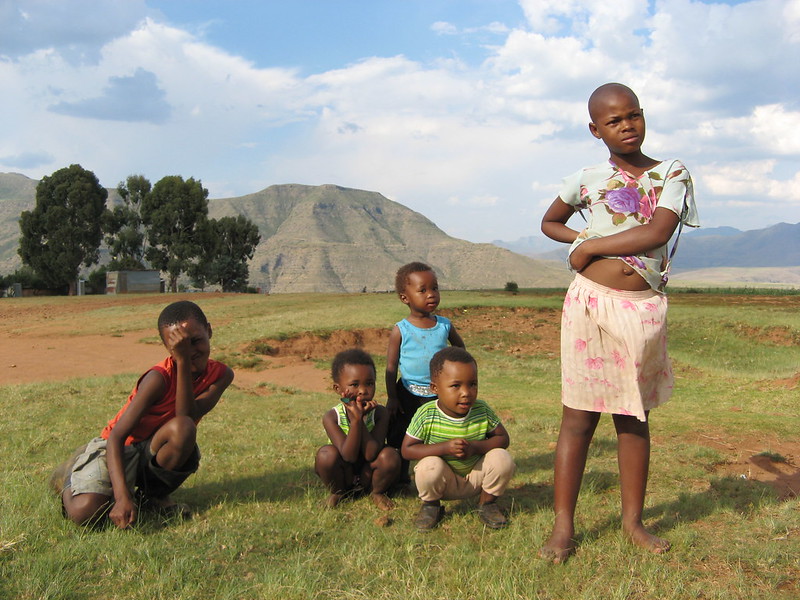Rural Poverty in Lesotho
 Lesotho is one of the poorest countries in Africa. About 33.9% of the population lives below the international poverty line of $2.15 a day, while 56.2% lives on less than $3.65 a day. Despite having natural resources like diamonds and mineral deposits and a high literacy rate of 79.4%, widespread poverty persists. This is largely due to corruption, high unemployment and dependence on imported goods. In rural areas, these challenges are more severe. Around 70% of Lesotho’s population lives in rural areas, where 60% experience poverty. In the rural highlands, approximately 68% of people lived in poverty in 2017, a more than eight percentage point increase from 2002, making rural poverty a growing concern for NGOs and humanitarian groups.
Lesotho is one of the poorest countries in Africa. About 33.9% of the population lives below the international poverty line of $2.15 a day, while 56.2% lives on less than $3.65 a day. Despite having natural resources like diamonds and mineral deposits and a high literacy rate of 79.4%, widespread poverty persists. This is largely due to corruption, high unemployment and dependence on imported goods. In rural areas, these challenges are more severe. Around 70% of Lesotho’s population lives in rural areas, where 60% experience poverty. In the rural highlands, approximately 68% of people lived in poverty in 2017, a more than eight percentage point increase from 2002, making rural poverty a growing concern for NGOs and humanitarian groups.
Food Insecurity in Rural Communities
Lesotho’s reliance on imported goods—reflected in a trade deficit of 52%—limits the availability of essential products. The COVID-19 pandemic and the war in Ukraine worsened global agricultural prices, making food even harder to access for those living below the poverty line. In rural areas, the mountainous terrain restricts farming. As a result, only 40% of Lesotho’s farming households maintain a stable food supply. This has left 293,000 rural residents, 19% of the rural population, in a state of severe food insecurity.
Barriers to Education
Despite a high literacy rate, rural poverty in Lesotho persists due to a lack of educational resources. In rural areas, only one in five boys and one in four girls complete secondary Grade 12. Underachieving in school can be traced back to the stunted growth that affects many children in Lesotho, with 35% of all children between the ages of 0-5 having their growth stunted by a lack of food. This gives rural children little preparation for education, which they can never recover from. For girls, a teenage pregnancy rate of 17.8% nationally and 25% for those in rural areas means many have no choice but to drop out of an education system that cannot support them while they give birth. This is symptomatic of Lesotho having one of the highest inequality rates in the world. Many schools in Lesotho shut down during the pandemic and never reopened, leaving almost 500,000 children without access to learning.
Health Care Access Remains Limited
Studies have found that affordable health care remains out of reach for most rural citizens in Lesotho. Around 60% of rural residents say that they cannot afford basic health care, while 25% of residents lack any awareness of what health insurance schemes are available. There is no government mechanism to support them, so these people are left in the dark about health care options. Only 35% report having a clinic nearby. Those who do seek care often encounter long wait times, medicine shortages and poorly equipped facilities. As a result, 50% of surveyed residents said they would forgo treatment entirely when facing a medical issue.
Hope Through Investment
Lesotho often goes unnoticed in global poverty discussions, but targeted efforts are making an impact. Food insecurity remains a top concern. To address this, the International Fund for Agricultural Development (IFAD) invested $64.3 million in seven programs aimed at strengthening food systems. These projects support improved farming techniques, irrigation development and decentralized governance. So far, 80,000 households have benefited. These ongoing efforts mark an important step toward ending rural poverty in Lesotho.
– Felix Hughes
Felix is based in Surrey, UK and focuses on Politics for The Borgen Project.
Photo: Flickr
